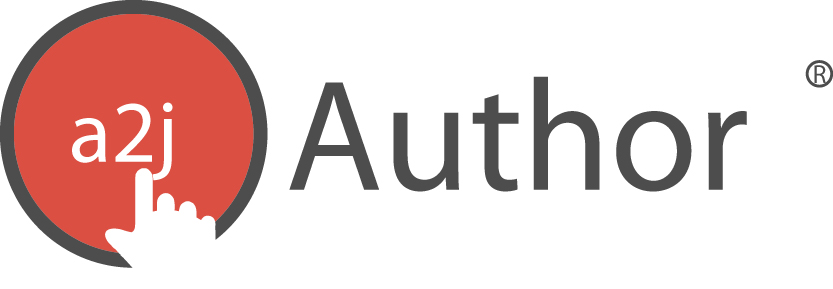Several enhancements, many of which were suggested by A2J Author® users, have been included in Version 2.0. While some of the improvements in 2.0 face the pro se users of the A2J Guided Interviews®, most of the improvements have been aimed at enhancing functionality that will make the tool more efficient and easier for the authoring community to use.
For the authors of A2J Guided Interviews®, increased functionality includes the ability to: set multiple variables in a single condition; round and truncate numbers; script macros for sign text and field labels; script functions in either lowercase or uppercase letters; add unlinked questions to an interview; add or insert automatically numbered questions without disturbing the existing numbering scheme; and, for replicated interviews, clear all audio file references if they do not apply to the current interview. Developers will also find that it is much easier to move between screens in the program. Many other fixes and formatting changes were also made that make the authoring of A2J Guided Interviews® more efficient for developers.
Developers will also be able to sort text and number lists making selection from a multiple choice list easier for the pro se user. Another 2.0 feature aimed at the user is an alternative end graphic. This feature provides the developer the ability to exchange the traditional courthouse graphic for an alternative graphic designated by the author. With the increasing popularity of the program as a means to conduct online web intake, programs will now be able to designate a graphic more in tune with the purpose of the interview.
In addition, as part of the A2J Author® 2.0 project A2J Guided Interviews® will be able to be integrated with “live help” vis-à-vis a Live Help selection mechanism which will exist on the National Server. Live Help functionality will be enabled as a “wrap-around” interface to any A2J Guided Interviews® associated with a program currently using LiveHelp. Adding Live Help will allow pro se litigants to get personalized help during their A2J experience.
Finally, the A2J Author® 2.0 project generated an XSL Transform for LSXML. Initially tested by Iowa Legal Aid, and now available on the Community Website, this tool allows A2J Author® to more easily “plug into” electronic filing systems and legal aid case dockets, making A2J Guided Interviews® the standard interface for pro se information collection (see Figure 5.)
Figure 5: Data Transform Flow for Case Management Systems
